The Life and Legacy of Darrell K Royal-Texas Memorial Stadium at 100 Years
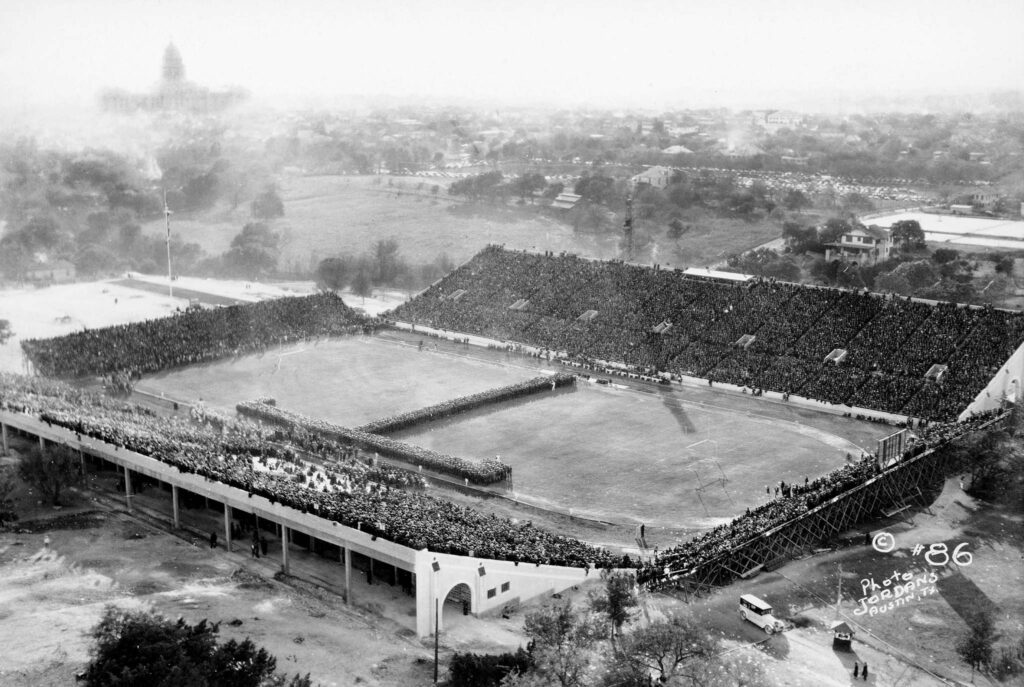
There are many places where Longhorns can gather by the thousands—Gregory Gym, Disch-Falk Field, Bass Concert Hall, the Moody Center. But there’s only one place, practically speaking (think seating, parking, and bathrooms) where the whole UT community can gather: our football stadium. That is why Darrell K Royal-Texas Memorial Stadium means more than football. And in the big picture, that is why football is about more than football; it’s something around which we can all come together. This fall, our stadium turns 100 years old.
Whereas Texas itself has always been big, things within this state, or on the campus of its flagship University, have not. For example, the first football team only had 21 players, and their average weight was 166 pounds. To modern eyes, the original stadium, which seated 27,000 in two nondescript concrete grandstands along the field and wooden bleachers at both end zones, resembles something that might be built by a well-to-do 6A high school today.
But in the 1920s, the student leaders and alumni, ever audacious, presented the planned structure to the Regents as “the largest facility of its kind in the Southwest,” to serve as both a football and a track and field stadium. Today, DKR-Texas Memorial Stadium is the seventh-largest stadium in America and 10th largest in the world.
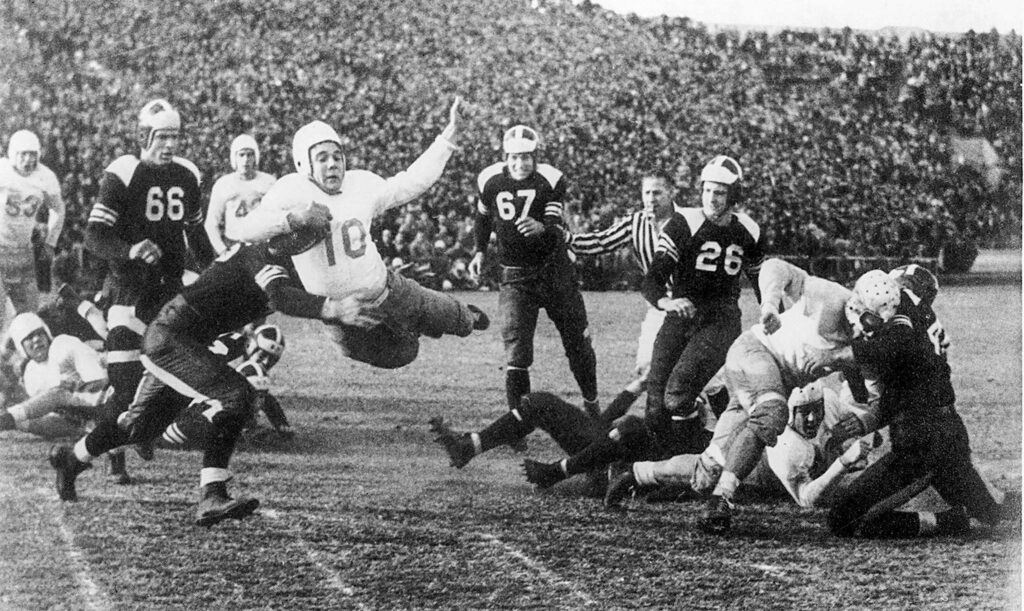
The fundraising campaign for the stadium, named “For Texas, I Will,” began modestly, when Athletics Director Theo Bellmont invited 30 students to lunch in a cafeteria in early 1923 to pitch the idea of a new stadium. Over the next year, he garnered pledges of about $500,000 for its construction. Alumnus Jim Nicar on his blog, UT History Corner, writes, “In just over a week, the students hoped to raise $100,000 in pledges on the campus. The citizens of Austin would be called upon for another $100,000, and then the alumni would need to donate the remaining $300,000.” By April 1925, only $222,000 of the $500,000 in pledges had been fulfilled, but that was enough to cover most of the construction.

Its expansion began almost immediately, when at less than two years old, the north end zone was enclosed to form a horseshoe. Ever since, it has been stretched and stacked and added onto and reconfigured almost continuously. Its grass field was replaced with artificial turf in 1969, returned to grass in 1996, then reverted to artificial turf in 2009. Its audio-visual display has evolved from a wooden scoreboard where numbers were changed manually, to a succession of electric scoreboards, to the Jumbotron, to the Godzillatron, to a light display that now turns the entire stadium into something resembling a dance club when the Longhorns score a touchdown. Fans’ senses are now stimulated by fireworks and drone shows, and drones that shoot fireworks, making one wonder how the spectacle of a football game could possibly be augmented again.
In 1971, the west side got an upper deck, and in 1998, the east, with luxury box suites added. In 1999, the track was removed and the stands extended toward the field, while the track team was given its own home in the new Mike A. Myers Stadium and Soccer Field.

“First and foremost, I think that DKR-Texas Memorial Stadium is an incredible gift to the state of Texas,” Athletics Director Chris Del Conte says. “It was built in 1924 as a memorial to Texas citizens who were lost in World War I, and when you go to the stadium, we have a spot dedicated to the people who served our country. That’s really what the intent was—to honor the Texans who bravely fought for our freedoms in World War I. It’s an incredible tribute that 100 years later, it’s still standing, and we recognize every year those who serve our country. That’s the beautiful thing about that stadium: It’s a standing tribute, and that’s pretty special.”
A 1977 ceremony rededicated Texas Memorial Stadium to the memory of American veterans of all wars. In 1996, the name of coaching legend Darrell K Royal was added at the front, and while the stadium’s name inevitably became shortened by fans to DKR, older alumni in particular were adamant that “Memorial” remain in the name, separated by a hyphen from the coach’s name to make clear that it was not a memorial to Royal, who was still very much alive and would live another 16 years.
Del Conte says a standing committee works on the stadium’s memorial aspect continuously. “There are new parts to that memorial, and it’s a fitting tribute to our state,” he says. “It’s a place where we play football games, but it’s also a place where we honor those who served our country.”

For the majority of its history, of course, it has been used mostly for football games, track and field meets (notably the storied Texas Relays), and marching band rehearsals. But a handful of notable non-sporting events have elbowed their way into its history. In 2021, commencement moved from the Main Mall to the stadium, but this move was in fact a return: From 1925–29, commencement was held in the new stadium at night, aided by strings of lights. A few Texas governors have held their inaugurations in the stadium. ROTC reviews were held there too, especially during World War II, Nicar says.
Aside from the estimable Longhorn Band, music has not played much of a role in the stadium’s history, with two gargantuan exceptions, which you can read about here.
“Celebrating 100 years—it’s just amazing,” Del Conte says. “I’m looking forward to this year.” He says a lot of universities have stadiums that are new, “but DKR is just iconic. It’s an iconic stadium—that’s all you can say.”
The centennial will be a season-long observation, but there also will be a day that marks the occasion. Given the stadium’s historic tie to military remembrance, one could make an educated guess about which game that would be, but Del Conte won’t confirm, and when asked, says simply, “Ah, just stay tuned!”
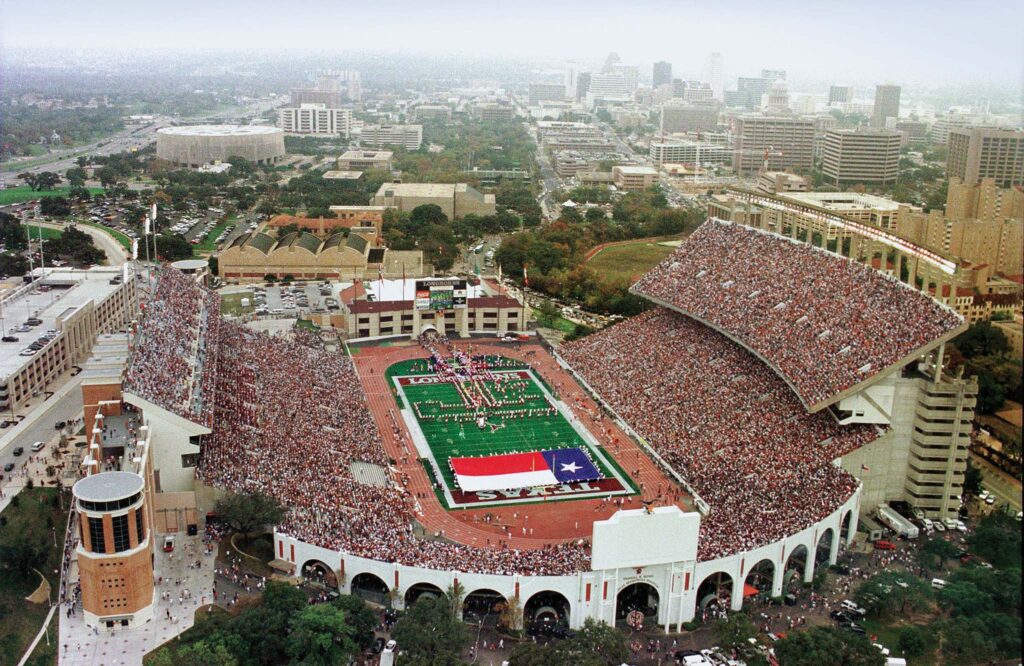
CREDITS: From top, Briscoe Center for American History; Texas Athletics (5)
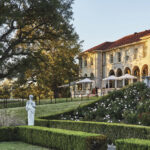

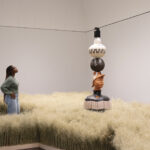

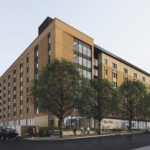

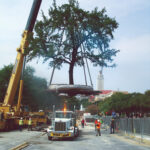
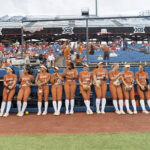




3 Comments